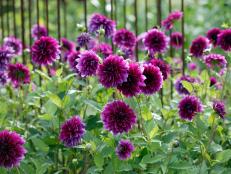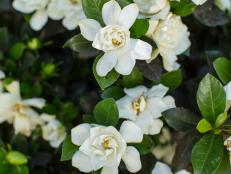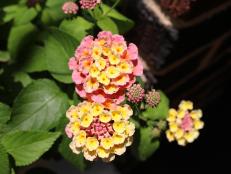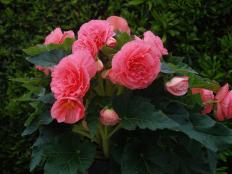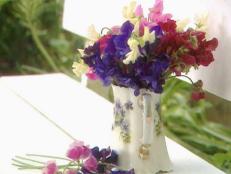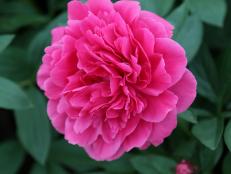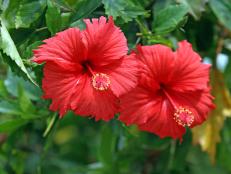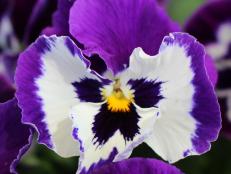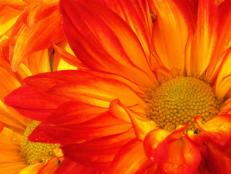Using Purple in the Garden

Barney the dinosaur's color was not chosen serendipitously. Studies show 75 percent of pre-adolescent children prefer purple to any other color. Some home-shopping channel demographics prove customers in general clearly prefer purple-colored products. And purple mood lights are believed to enhance creativity both at home and at the office.
Purple is perhaps the most intriguing color because it has two faces. It runs hot and cold. It is the high-frequency child of two primary colors.
Combining fire red and cool ocean blue can result in ultraviolet, which da Vinci clearly preferred when tackling his most challenging projects. When the two primaries merge to form purple, there is a range of hues divided by the emphasis on one or the other primary parent. The red-purples will be warm and vibrant--seen as more energetic to the human eye. The blue-purples are subdued and seen as peaceful and contemplative.
Nowhere else but in the garden does the full range of hot and cold purples appear. Merely looking for a purple flower can vastly over-simplify a very complex set of hues. If you become aware of the two temperatures, it will provide you a far more powerful grasp of color in garden design. It will also help you train your eye to recognize these subtle differences.

Above all you want to strive for harmony in your flower-color palettes. Those combinations that are not harmonious will affect you in two ways. First, the colors may be so understated that they are dull or even boring. On the other hand, colors that are overstated or combined without consideration of each may appear chaotic. Essentially these will either put you to sleep or drive you nuts.
The color wheel is vital to understanding the harmonious use of purple in the garden. Directly across the wheel from the purples are lime green and yellow. These are complementary colors that when paired with the purples create a dynamic contrast that really brings out the best qualities of both hues.
While lavender and magenta are common colors in nature, true purples are not. Nature uses purple sparingly, almost as an afterthought. If used carefully in precise locations relative to other colors, you can create dynamic results.

Red-purple is the complement of yellow green or lime green. Blue-purple's complement is canary yellow. If you were to create purple flowers in a field of green foliage, the purples would be gobbled up by the greens. But when you use these purples with their complements to create three hues in a palette of green, yellow and purple, there is a harmonious combination.
You can also explore analogous colors. These are colors that match. You'll find analogous colors contiguous on the color wheel. For example, red, orange and yellow are analogous.
When using purples, your analogous hues will be different for each one. The analogous range for red-purple would be red and orange. This gives you a hot-colored palette for flowers that work with that type of purple.

When using a blue-purple, the analogs would be blue and turquoise or green. This is the start of a cool-colored palette bouncing off that blue-based purple.
With a new knowledge of the two purples and how they relate to other colors, you will have the basis for a great garden. It tells you how to choose plants by color, and it dictates that you choose those that bloom at the same time to achieve the desired results. A plant that blooms purple in May will not benefit from a complementary yellow daisy that flowers in August. Getting bloom time, color and size just right is the formula for picture-perfect color-garden design.
So if you love purple, use it with aplomb and flair. Paint it with full knowledge of its two faces. Then celebrate with flowers of this same hue of passion reserved for pharaohs, priests and patriarchs.
Purple Plant Photos
See All Photos(Maureen Gilmer is a horticulturist and host of Weekend Gardening on DIY-Do It Yourself Network. E-mail her at mo@moplants.com. For more information, visit: www.moplants.com or www.DIYNetwork.com. Distributed by Scripps Howard News Service.)






